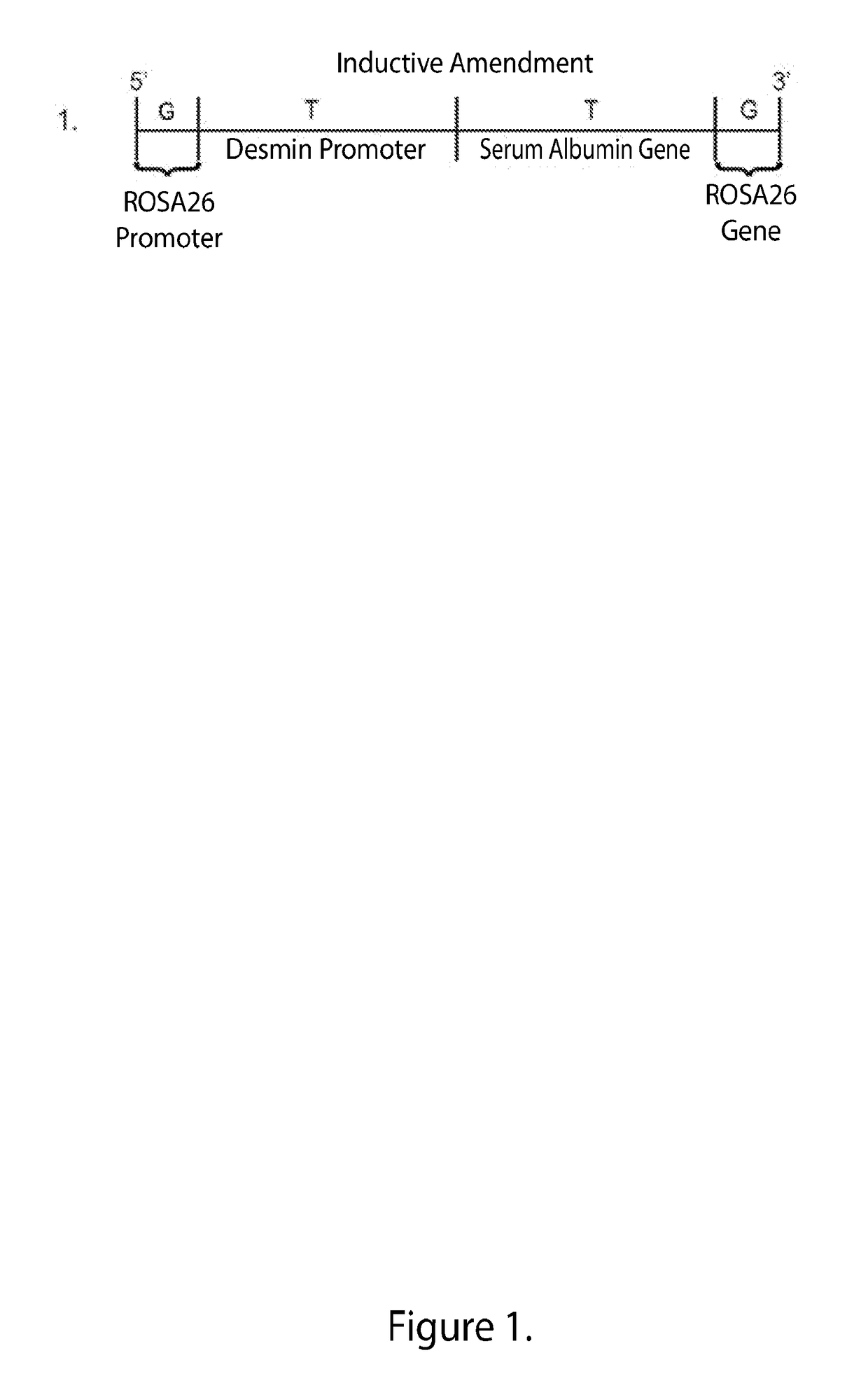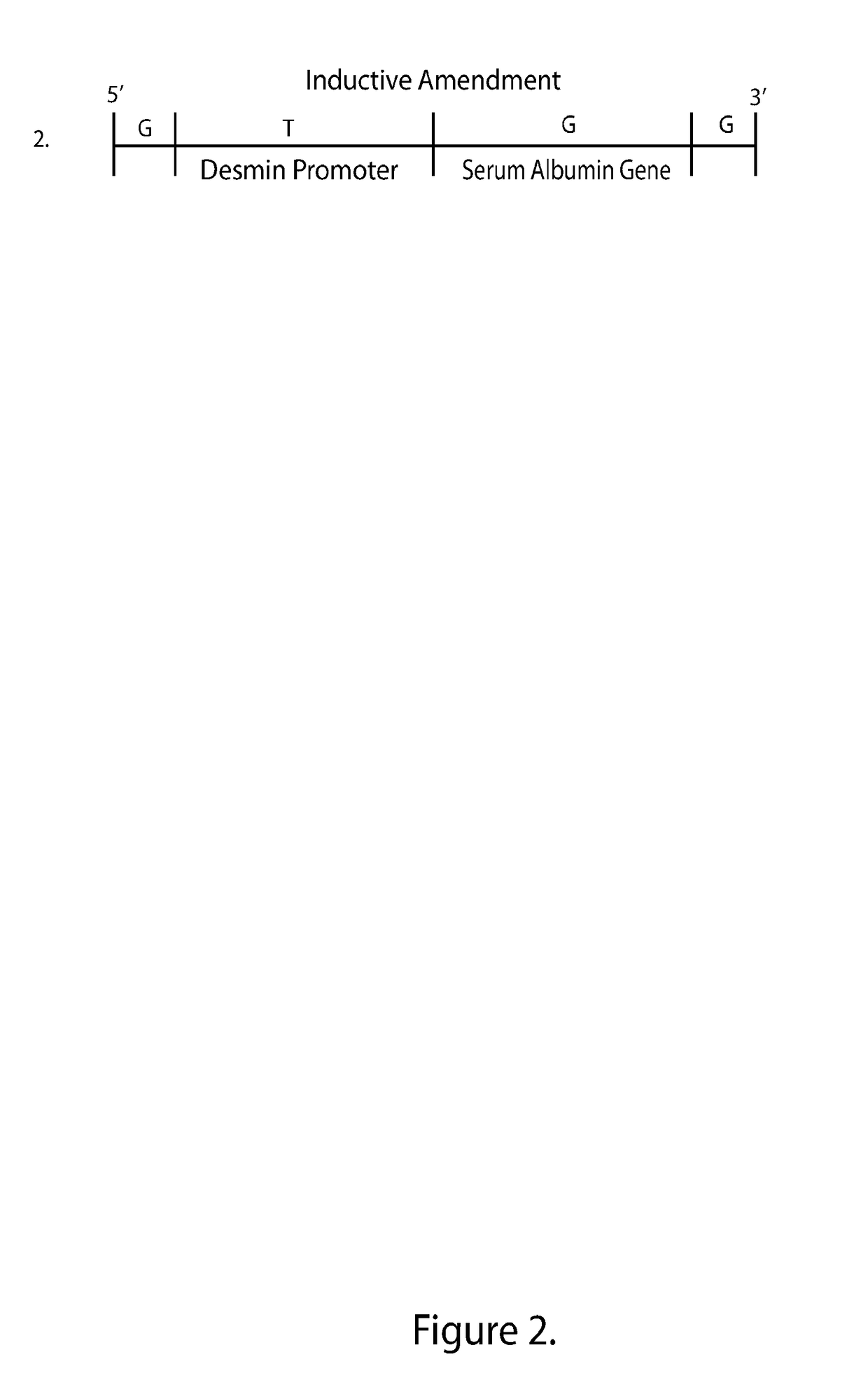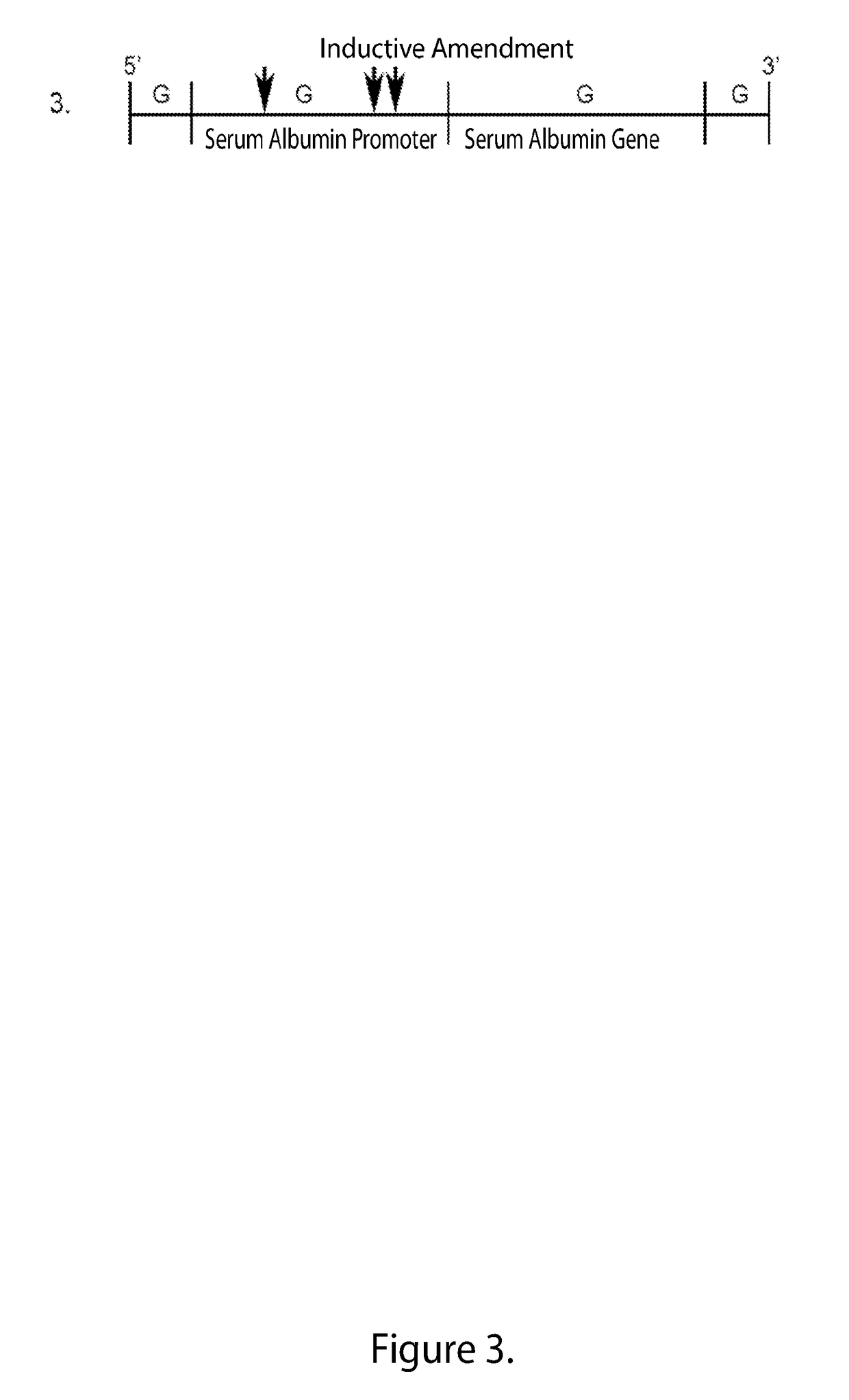Methods for extending the replicative capacity of somatic cells during an ex vivo cultivation process
a somatic cell and ex vivo cultivation technology, applied in the direction of genetically modified cells, transferases, skeletal/connective tissue cells, etc., can solve the problems of impaired differentiation capacity, limited scale at which primary cells can be passed, and existing myogenic cell lines remain poorly characterized, so as to increase the proliferative capacity of modified cell populations, prolong and prolong the effect of the proliferative capacity of targeted cell populations
- Summary
- Abstract
- Description
- Claims
- Application Information
AI Technical Summary
Benefits of technology
Problems solved by technology
Method used
Image
Examples
first exemplary embodiment
ence Through Genetic Amendment of the CDKN2B Locus and Ectopic Expression of TERT
(A) Delayed Replicative Senescence Through Genetic Amendment of the CDKN2B Locus
[0033]In sum, this first exemplary embodiment disrupts the CDKN2B locus encoding the p15 protein within primary myoblast cell populations isolated from Gallus gallus skeletal muscle using CRISPR / Cas9 to generate an INDEL targeted to exon #1 of CDKN2B (NCBI Accession Number: NM_204433.1) using guide RNAs (gRNAs) (SEQ ID NO 1-5). Although disrupting the CDKN2B locus alone provides benefits, when done in combination with ancillary telomerase activity from a genetic construct (SEQ ID NO 6) directing expression of a telomerase protein homolog from a TERT gene (NCBI Accession Number: NM_001031007.1; NCBI Gene ID: 420972), the replicative capacity of modified cell populations increases indefinitely. Targeted inactivation of CDKN2B is a novel approach.
[0034]In general terms, the first embodiment extends the native replication capaci...
second exemplary embodiment
nce Through Genetic Amendment of the CDKN2A Locus and Ectopic Expression of TERT
[0051]In sum, the second exemplary embodiment disrupts the CDKN2A locus encoding the p16 protein within a metazoan somatic cell population that is a primary myoblast cell population isolated from Bos taurus skeletal muscle using CRISPR / Cas9 to create an INDEL mutation targeted to the first exon of the CDKN2A sequence encoding p16, using gRNAs (SEQ ID NO 8-10). The Bos taurus gene CDKN2A has two predicted splice variants (NCBI Accession Numbers: XM_010807759.2, XM_010807758.1) wherein the first exon encoding p16 is exon #2 of CDKN2A. Although disrupting the CDKN2A locus alone provides replicative benefits, when used in combination with ancillary telomerase activity from a synthetic genetic construct (SEQ ID NO 11) directing expression of a telomerase protein homolog from a TERT gene in the same cell population (NCBI Accession Number: NM_001046242.1; NCBI Gene ID 518884), the synergistic action of both ame...
third exemplary embodiment
ence Through Expression of Ectopic Cyclin-Dependent Kinase and Ectopic TERT
[0054]In general terms, the third exemplary embodiment abrogates cyclin-dependent kinase inhibitor-mediated stabilization of retinoblastoma protein inhibition of the cell division cycle during replicative senescence by ectopic overexpression of cyclin-dependent kinase homologs; specifically, modification of cells with a genetic construct directing ectopic expression of a CDK4 protein homolog, from a CDK4 gene (NCBI Gene ID: 510618). Additional benefit can be achieved by adding ancillary telomerase activity from a genetic construct directing overexpression of a telomerase protein homolog from a TERT gene (NCBI Gene ID: 518884). Overexpression of telomerase protein homolog increases the replicative capacity of modified cell populations relative to the unmodified parental populations.
[0055]More specifically and in one embodiment, Gallus gallus was chosen to model modification of poultry skeletal muscle cells usi...
PUM
| Property | Measurement | Unit |
|---|---|---|
| average cell doubling time | aaaaa | aaaaa |
| average cell mass | aaaaa | aaaaa |
| concentration | aaaaa | aaaaa |
Abstract
Description
Claims
Application Information
 Login to View More
Login to View More - R&D
- Intellectual Property
- Life Sciences
- Materials
- Tech Scout
- Unparalleled Data Quality
- Higher Quality Content
- 60% Fewer Hallucinations
Browse by: Latest US Patents, China's latest patents, Technical Efficacy Thesaurus, Application Domain, Technology Topic, Popular Technical Reports.
© 2025 PatSnap. All rights reserved.Legal|Privacy policy|Modern Slavery Act Transparency Statement|Sitemap|About US| Contact US: help@patsnap.com



